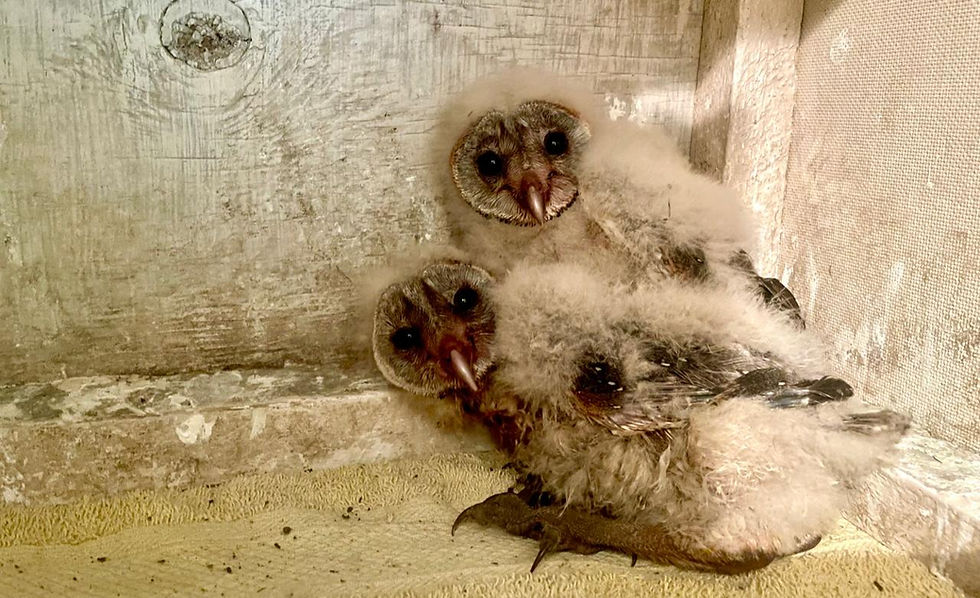Biggles the Little Sparrowhawk
- Simon Thomsett

- Jun 10, 2022
- 3 min read
A very young Little Sparrowhawk was rescued by Nick Trent when it fell out of its nest in Kilifi at the coast. It was put back into its nest which is the right thing to do. Waifs and strays in the form of very young, not able to fly raptors and especially owls should always be left exactly where they were found because somewhere hidden nearby are their anxious parents. Problems such as the nest being cut down, blown down, ruined in a storm are easily fixed by the building of another nest or fixing the old nest. It’s certainly easier than spending a year tending to them, avoiding imprinting, training them, getting them to “forage” successfully, hacking them back totalling thousands of hours, no holidays and quite a bit of money. “Really? Is this all necessary for such little a bird?” Damn right it is. They are not very different to a massive eagle in terms of needs and time.

The problem with the Kilifi Little Sparrowhawk is that she fell out a second time and was a little worse for wear and would not have survived a third attempt. She was named Biggles after a slightly better aviator and Nick did a brilliant job of manning her. For everywhere that Nick would go she would have to follow. Biggles arrived appropriately looking out of a plane window as though she was lending technical co-pilot advice.
At the Soysambu Raptor Centre she had a wall mounted perch that is above head height from which she would look down on people. She was the first bird everyone would see, and I’d take the time to explain the principles of raptor biology by slightly over-emphasising the key points that make raptors so unique.

First she’d amaze every visitor who saw her with her tiny size. No bigger than a starling but with the attitude of an eagle and a complex biology to match. I'd first ask the group how many Little Sparrowhawks they estimated there were on Soysambu, some 50,000 acres of woodland, savannah, lake shore, volcanoes, forested rivers etc. I’d get variable answers ranging from 500 to 10,000. Reason being Biggles was very small and you could pack them in like doves or sparrows without seeing any because the area was so large. Then I would then explain to visitors that Biggles, the tiniest of all our hawks, would require a territory larger than a female leopard, that she would take longer to get sexually mature and have far less babies and live longer. At this most people are stunned. The thought that this tiny predator needed more space, time and resources than a leopard transported her from being “just a bird” into a very important creature no less needy as a large carnivore.
Put in another perspective gained from actual foot work on the ground I believe that there may be some 7-10 pairs on Soysambu's 50,000 acres. On the same property we estimate some 250 spotted hyenas and 10-20 leopards. Our lion population is nowhere near at capacity but numbers are about the same as the Little Sparrowhawk.
Biggles would stare back at the aghast visitors who, for the first time for nearly all of them, viewed raptors in a very different light to previously. True I may have over-emphasised things but as we moved on to the larger raptors, like the Crowned Eagles, everyone was prepared to say when asked to guess, that one pair required a territory bigger than the whole conservancy. And they would be right.
I soon trained her to fly to the glove on a line and she would chase the lure. But to be honest after having her a month or so I was extremely busy, dealing with other more pressing new causality cases and snowballing bureaucracy, admin and staff truancy that made an afternoon stroll messing about with Biggles impossible for months.
In April I could finally drop her weight a fraction and get her flying to me once more. Spending those vital hours, every day, was I able to get her into some sort of flying condition. Little Sparrowhawks are amazingly tough, tougher than a European Sparrowhawk nearly 3 times her size. But they are still as fragile as a wine glass. One mistake, one forgotten meal, one forgotten weight measurement on the scales and she could have a fit and die. By the end of 10 days she was buzzing about well, and more importantly making long flights. Once I lost her overnight and panicked, but found her the next day being mobbed by drongos. Back home she went. I beefed her up with as much as she could eat and on the 28th April 2022 I cut her jesses and let her go.

Wish to learn more, visit our website and join us on Facebook and Instagram.
Kenya Bird of Prey Trust
Understand - Protect - Restore






Comments